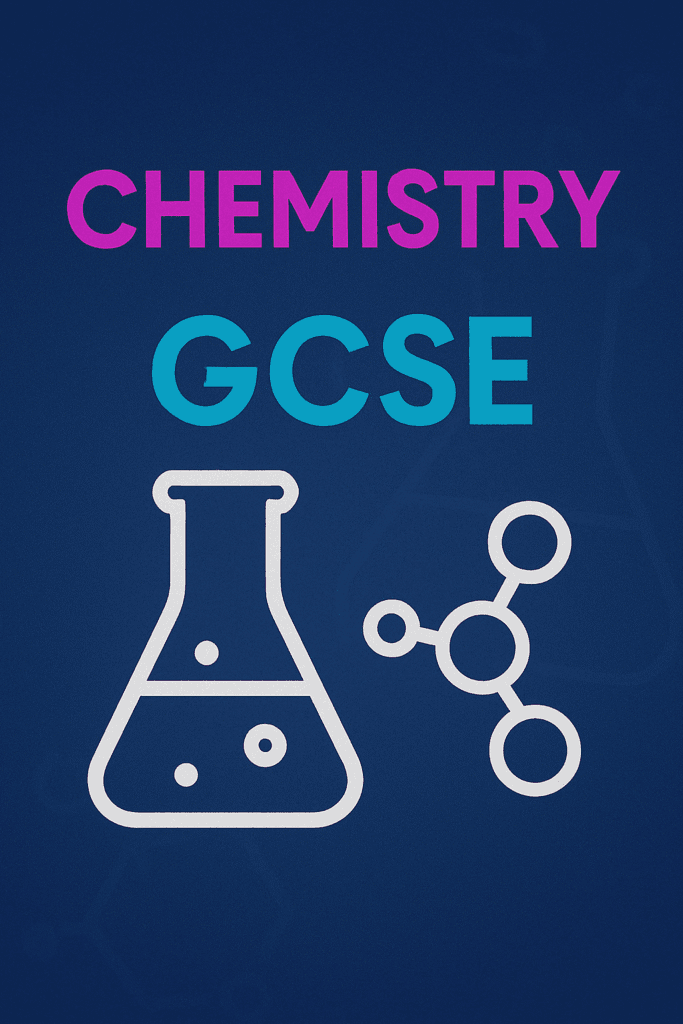Reading Time: < 1 minute
Table of Contents
ToggleQuantitative Chemistry
Introduction
Quantitative Chemistry involves using numbers to describe chemical reactions. This topic is essential for accurately measuring reactants and products in GCSE Chemistry.
This article will cover:
- Understanding moles and relative formula mass.
- Calculating yields and concentrations.
- Applications of quantitative chemistry in experiments.
Moles and Relative Formula Mass
The Mole Concept
- A mole is
 particles of a substance.
particles of a substance. - Formula:
 .
.
Example: Calculate the moles in 12g of carbon (Mₐ = 12).
![Rendered by QuickLaTeX.com \[ \text{Moles} = \frac{12}{12} = 1 \, \text{mol}. \]](data:image/svg+xml;base64,PHN2ZyB4bWxucz0iaHR0cDovL3d3dy53My5vcmcvMjAwMC9zdmciIHdpZHRoPSIxNTgiIGhlaWdodD0iMzYiIHZpZXdCb3g9IjAgMCAxNTggMzYiPjxyZWN0IHdpZHRoPSIxMDAlIiBoZWlnaHQ9IjEwMCUiIHN0eWxlPSJmaWxsOiNjZmQ0ZGI7ZmlsbC1vcGFjaXR5OiAwLjE7Ii8+PC9zdmc+)
- A mole is
Calculating Yields and Concentrations
Percentage Yield
![Rendered by QuickLaTeX.com \[ \text{Percentage yield} = \frac{\text{Actual yield}}{\text{Theoretical yield}} \times 100. \]](data:image/svg+xml;base64,PHN2ZyB4bWxucz0iaHR0cDovL3d3dy53My5vcmcvMjAwMC9zdmciIHdpZHRoPSIzMzciIGhlaWdodD0iNDEiIHZpZXdCb3g9IjAgMCAzMzcgNDEiPjxyZWN0IHdpZHRoPSIxMDAlIiBoZWlnaHQ9IjEwMCUiIHN0eWxlPSJmaWxsOiNjZmQ0ZGI7ZmlsbC1vcGFjaXR5OiAwLjE7Ii8+PC9zdmc+)
Example: If 40g of a product is made but 50g was expected,
![Rendered by QuickLaTeX.com \[ \text{Percentage yield} = \frac{40}{50} \times 100 = 80\%. \]](data:image/svg+xml;base64,PHN2ZyB4bWxucz0iaHR0cDovL3d3dy53My5vcmcvMjAwMC9zdmciIHdpZHRoPSIyODEiIGhlaWdodD0iMzYiIHZpZXdCb3g9IjAgMCAyODEgMzYiPjxyZWN0IHdpZHRoPSIxMDAlIiBoZWlnaHQ9IjEwMCUiIHN0eWxlPSJmaWxsOiNjZmQ0ZGI7ZmlsbC1vcGFjaXR5OiAwLjE7Ii8+PC9zdmc+)
Titration Calculations
Used to find the concentration of a solution.
- Key Formula:
 .
.
- Key Formula:
Conclusion
Quantitative chemistry helps chemists calculate amounts precisely. Practise these calculations to gain confidence in this vital GCSE Chemistry topic.
📅 Book Your Free GCSE Math Consultation Today!
Skinat Tuition | Excellence in SAT, GCSE, and A-Level Tutoring Worldwide.


